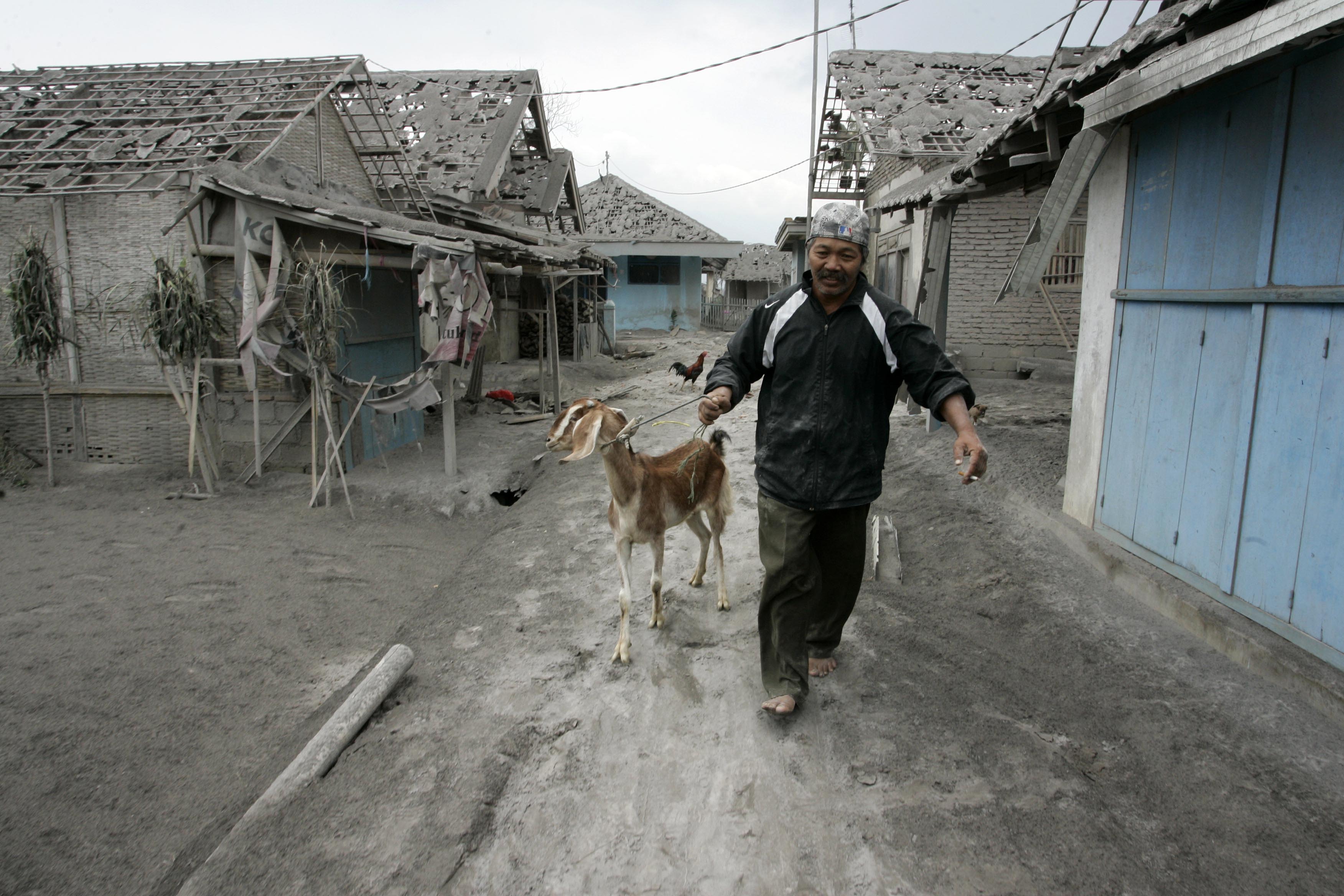As Indonesia deals with the aftermath of two volcanic eruptions, experts question whether the country is well-equipped to face the threats from dozens of volcanoes that dot the archipelago.
At least 34 people have been killed in two volcanic eruptions this month.
Seventeen were killed on 1 February when Mount Sinabung in North Sumatra Province erupted. On 13 February, Mount Kelud in East Java Province also erupted, killing seven.
More than 130,000 people were displaced as a result of the two disasters.
“We have 100 million people living in places that are prone to disasters, including volcanoes, earthquakes and floods,” said Dody Ruswandi, deputy for emergency response at the government’s National Disaster Management Agency.
“It’s a big challenge both for the local and central governments.”
Indonesia straddles the Pacific Ring of Fire, an arc of volcanoes and fault lines encircling the Pacific.
Ruswandi said each province has its own disaster management agency and but levels of preparedness vary.
“In East Java where Mount Kelud is, the level of preparedness is good. Many lives were saved in the latest eruptions even though the area around the volcano is inhabited by hundreds of thousands of people,” he said.
In the case of Sinabung, Ruswandi said people were unfamiliar with the habits of the volcano due to it having been mostly dormant for hundreds of years.
Before small eruptions began intermittently last September, culminating in February’s deadly eruption, Mt Sinabung last exploded in 2010, but there were no fatalities, except for one person who died of respiratory problems linked to the disaster.
“The people around Sinabung had little experience in dealing with its activity because there’s little information in terms of historical precedents. The recent eruptions can serve as a lesson for them so that in the future they can save themselves,” he said.
BNPB has worked with local agencies and NGOs on preparedness programmes at community level. These include identifying threats, providing training to local officials and conducting simulations and drills, risk mapping and quantifying populations likely to be affected.
“Local governments only spend tiny portions of their budgets on disaster management. But things are improving and there’s growing awareness to promote community preparedness and awareness,” Ruswandi said.
BNPB has an annual budget of nearly US$300 million plus $380 million in reserve funds, he said.
Wahyu Triyoso, a geophysicist at the Bandung Institute of Technology, said Indonesia should pay more attention to mitigation to deal with bigger volcanic eruptions.
Imagining the worst
“When Kelud erupted several major airports were closed,” he said. “Can you imagine if Anak Krakatau [“child of Krakatau” in Indonesian] erupted and expelled energy many times that of Kelud?” he asked, referring to a mountain formed from an eruption in 1883. The hot ash and tsunamis created destroyed 150 villages on the coasts of the islands of Sumatra and Java and killed an estimated 40,000 people.
Anak Krakatau rose above sea level in 1930 from the centre of the underwater caldera left by the original volcano.
“The country’s biggest airport would be paralysed. What if eruptions were to last for months? The economy would shut down,” warned Triyoso.
Indonesia needs to boost scientific modelling, including simulations, to estimate casualties and human costs in the event of a major volcanic eruption such as what happened to Krakatau, the scientist suggested.
“Now imagine if the Krakatau eruption in 1883 happened in today Indonesia? Krakatau eruptions did not only produce ash but also triggered a giant tsunami. Visualizing such unexpected, big disasters like Krakatau under the current conditions is important,” Triyoso said.
The country also needs to strengthen its food and energy security in order to handle such a large-scale disaster, he added. Indonesia currently has a fuel stock that only lasts 21 days and depends on imports from Singapore.
Triyoso said monitoring systems are adequate, with sensor equipment installed at volcanoes nationwide, but authorities need to actually use this monitoring data in their risk and hazard assessment programmes, including eruption scenarios, and in formulating reconstruction plans.
Since January at least 197 people have been killed in disasters, including flooding, landslides, and volcanic eruptions nationwide, according to BNPB. At least 64 were injured and 1.6 million displaced, while tens of thousands of homes were damaged.
Based on last year’s research, community preparedness in Indonesia remained low, despite an increase in knowledge and understanding of disasters, with only 0.5 percent of local budgets allocated for disaster preparedness, BNPB said.
“Disaster preparedness has not become a culture,” the agency concluded.
ap/pt/cb
This article was produced by IRIN News while it was part of the United Nations Office for the Coordination of Humanitarian Affairs. Please send queries on copyright or liability to the UN. For more information: https://shop.un.org/rights-permissions





